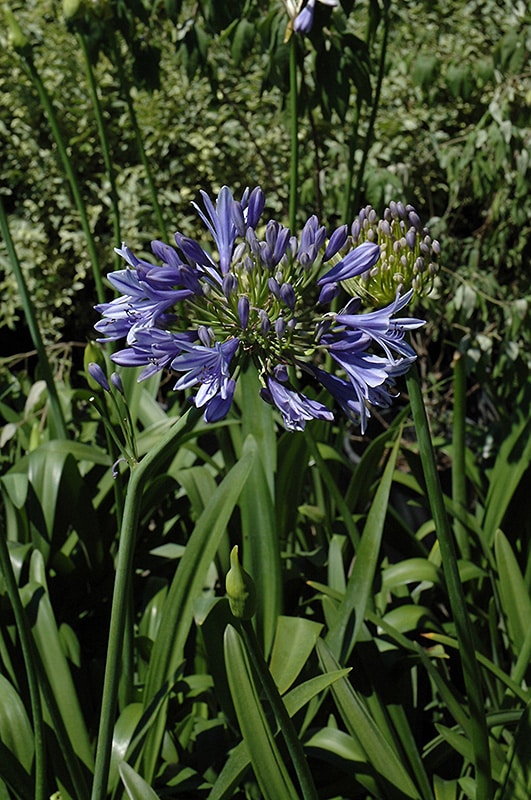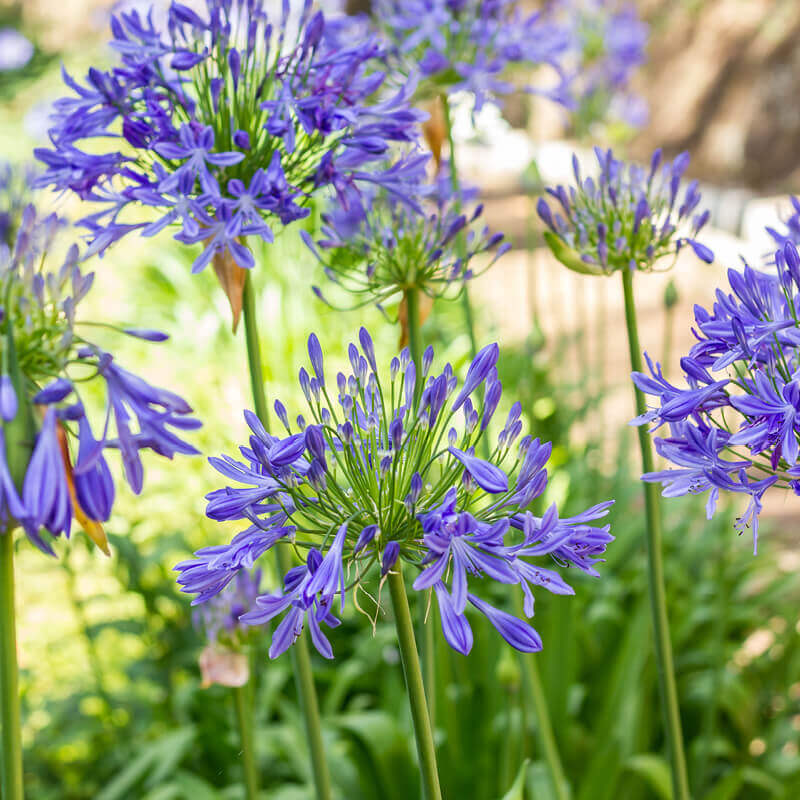Opening the Mysteries of Agapanthus: A Thorough Expedition of Varieties, Planting Techniques, and Upkeep Practices

Agapanthus, frequently shrouded in mystery because of its diverse array of varieties and complex maintenance demands, occurs as an enigmatic subject for several yard lovers. With a multitude of cultivars offered, each boasting special characteristics and development behaviors, comprehending the details of these plants can be both fulfilling and challenging. As we discover the nuances of planting techniques and explore the crucial maintenance methods required to support these sensational blooms, a globe of possibilities unfolds for those looking for to grasp the art of growing agapanthus.
Agapanthus Varieties Demystified
Agapanthus ranges show a varied variety of features, making it vital for garden enthusiasts to comprehend the distinctions between them for successful growing. One of one of the most preferred variations is the Agapanthus africanus, typically known as the African Lily. This range is prized for its striking blue or white flowers and its ability to thrive in both containers and yard beds. The Agapanthus praecox, or Blue Lily of the Nile, is another favored option, flaunting big round clusters of blue or white flowers atop high stalks.
For those seeking an extra portable alternative, the Agapanthus 'Peter Pan' is an appropriate selection, with its smaller sized stature and fragile blue blooms. On the various other hand, the Agapanthus 'Storm Cloud' range provides a significant flair with its deep purple blossoms and dark foliage (Agapanthus). In addition, the Agapanthus 'Albus' stands out for its pure white blooms, developing a spectacular contrast in any type of garden setup
Understanding these distinctions can assist gardeners select the most ideal Agapanthus selection for their certain requirements and preferences, making sure a prospering and lively garden display screen.
Planting Agapanthus Like a Pro
When growing Agapanthus for optimum development and visual impact, meticulous focus to soil high quality and sunlight direct exposure is vital. Agapanthus prospers in well-draining dirt with a somewhat acidic to neutral pH degree. Before planting, change compressed or hefty soil with raw material such as compost to improve drainage and fertility. Select a growing area that obtains full sunlight to partial color, as Agapanthus typically prefers a minimum of 6 hours of sunlight daily for robust blooming. When growing, make certain the crown of the plant sits at dirt level to protect against rot and encourage healthy development.

Vital Maintenance Tips for Agapanthus
To ensure the continued health and wellness and vigor of your Agapanthus plants, what secret upkeep methods should be prioritized throughout the expanding season? Ample watering is vital, specifically throughout the active development durations in springtime and summer season. As soon as developed, Agapanthus plants choose uniformly wet soil however can endure brief durations of drought. Mulching around the plants can assist maintain dirt wetness and regulate temperature level. Regular fertilization is important to promote blooming and overall plant health. Make use of a balanced plant food with a higher phosphorus web content to encourage flower production. Deadheading spent blossoms can prolong the blooming duration and boost view it the plant's look. Agapanthus plants take advantage of department every few years to avoid congestion, improve blooming, and invigorate the plant. Replant the departments in well-draining soil improved with raw material. Watch out for usual bugs and conditions, such as aphids or root rot, and take punctual activity to address any problems that may develop. By following these upkeep pointers, you can enjoy healthy and vibrant Agapanthus plants throughout the growing period.
Troubleshooting Common Agapanthus Issues
Determining and without delay attending to usual problems that might impact the health and wellness of your Agapanthus plants is important for maintaining their vigor and elegance. One usual trouble that Agapanthus might face is overwatering, causing root rot. To prevent this, ensure correct drain in the dirt and stay clear of waterlogging. Alternatively, underwatering can cause wilting and yellowing of leaves. To battle this, establish a normal watering timetable, making sure the dirt is damp yet not soaked. Agapanthus are also at risk to pests such as snails and aphids. Regularly examine the plants for any type of signs of infestation and treat them quickly with appropriate methods such as insecticidal soap or all-natural killers. In addition, insufficient sunlight can cause stunted development and fewer blossoms. Guarantee your Agapanthus receive enough sunlight, preferably around 6-8 hours each day. By being cautious and dealing with these typical issues immediately, you can aid your Agapanthus prosper and thrive in your garden.
Taking Full Advantage Of Agapanthus Blooms: Specialist Approaches
Enhancing the vibrancy and abundance of Agapanthus flowers needs a strategic approach that takes advantage of ideal growing problems and professional methods. To optimize Agapanthus blooms, begin with selecting the ideal variety for your area and desired aesthetic. Agapanthus varieties differ in height, bloom shade, and bloom time, so select one that suits your yard's demands.
Correct growing is important for durable growing. Plant Agapanthus in well-draining dirt with ample sunlight direct exposure. Ensure the dirt is abundant in nutrients and raw material to sustain healthy growth and respected flowering. Routine watering, especially during the energetic expanding season, is necessary to prevent anxiety and motivate flowering.
Feed Agapanthus with a balanced fertilizer to promote flowering. Deadheading spent blossoms can redirect the plant's energy right into creating brand-new blossoms (Agapanthus). Separate jammed globs every couple of years to rejuvenate the plant and stimulate find more information blooming
Lastly, safeguard Agapanthus from bugs and illness that can impede growing. Executing these professional strategies will certainly help you attain a stunning screen of Agapanthus blossoms in your garden.
Conclusion
In final thought, the secrets of agapanthus have actually been revealed through a detailed exploration of selections, planting methods, and upkeep techniques. By fixing common issues and carrying out expert techniques, one can optimize agapanthus flowers and produce like this a stunning yard display screen.

When planting Agapanthus for optimal development and visual influence, meticulous interest to soil top quality and sunlight exposure is extremely important.To plant Agapanthus like a pro, room the plants according to their mature dimension to permit for correct air circulation and prevent overcrowding. Agapanthus plants profit from department every few years to stop overcrowding, improve blooming, and renew the plant.In verdict, the mysteries of agapanthus have actually been unveiled with a detailed exploration of selections, growing strategies, and maintenance practices.